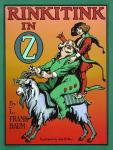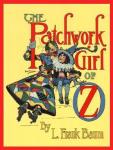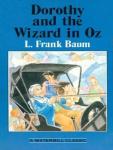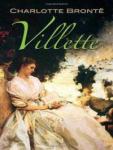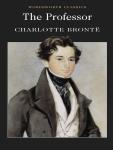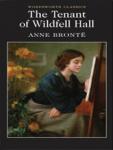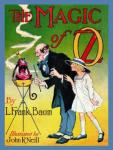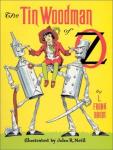Hospital Sketches

The Shelf Life American Civil War Collection is a unique and exciting collection of pre-1923 titles focusing on the American Civil War and the people and events surrounding it. From memoirs and biographies of notable military figures to firsthand accounts of famous battles and in-depth discussions of slavery, this collection is a remarkable opportunity for scholars and historians to rediscover the experience and impact of the Civil War. The volumes contained in the collection were all written within 60 years of the end of the war, which means that most authors had living memory of it and were facing the effects of the war while writing. These firsthand accounts allow the modern reader to more fully understand the culture of both the Union and Confederacy, the politics that governed the escalation and end of the war, the personal experience of life during the Civil War, and the most difficult and polarizing question in the history of the United States: slavery. The American Civil War Collection allows new readers access to the contemporary arguments and accounts surrounding the war, and is a vital new tool in understanding this important and pivotal chapter in American history.
Contents
- Chapter 1 - Obtaining Supplies
- Chapter 2 - A Forward Movement
- Chapter 3 - A Day
- Chapter 4 - A Night
- Chapter 5 - Off Duty
- Chapter 6 - A Postscript
Related Books
Author other works
-
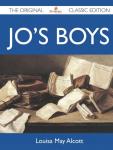
Jo's Boys
Louisa May Alcott
This is a story of how the Little Men turned out. Will Tom be able to get Nan to marry him? Or will Nan turn him down? What about Dan? Does he ever marry? And what about the Princess? Will Mrs. Meg Brooke ever let Nat marry Daisy? Read the book to find out the rest of the story! For Jos Boys, which she intended to be the last in her series about the March family, Louisa May Alcott pulled out all the stops. It is with great fanfare that the beloved characters of former books make their last appearance. All sorts of incredible developments are described in the course of the novel-and some of them fairly stretch the imagination. My favorite is the emigration of the whole extended family to Plumfield: Meg has a house close by, Laurie and Amy have a mansion on an adjacent hill, and even Mr. March and Mr. Laurence have become neighbors to the school. Of course, this and all the rest make the story more fun. The school itself has become a college-a convenient twist that allows the characters from Little Men to still be in the same area years after they ought to have moved away. Though not all the Plumfield students make a second appearance, Alcotts famous favorites remain. A decade later, Demi is having trouble deciding on a career and declaring himself to a certain young lady. Tommy is in pursuit of his childhood sweetheart, Nan, who has vowed to be a spinster for life. Nat is sent to Germany, far away from his beloved Daisy, for musical training. Emil is shipwrecked, Dan tangles with the law, and young Ted gets into scrapes worthy of his namesakes youth. There is enough lovering and spooning here to make up for the lack in Little Men, but some characters brought in for the romance are ex machina. I loved this book, but I thought that little men and little Woman were better. Perhaps it is the long times span she took writing it.
-
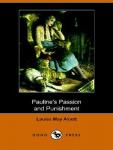
Pauline's Passion And Punishment
Louisa May Alcott
Her eyes came back from their long gaze and settled on him full of an intelligence which deepened his perplexity. "You have not learned to know me yet; death is not more inexorable or time more tireless than I. This week has seemed one of indolent delight to you. To me it has been one of constant vigilance and labor, for scarcely a look, act, or word of mine has been without effect.
-
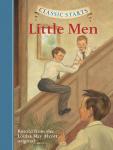
Little Men
Louisa May Alcott
Little Men, or Life at Plumfield with Jo's Boys is a novel by American author Louisa May Alcott, first published in 1871. The novel reprises characters from Little Women and is considered by some the second book of an unofficial Little Women trilogy, which is completed with Alcott's 1886 novel Jo's Boys, and How They Turned Out: A Sequel to "Little Men". Little Men tells the story of Jo Bhaer and the children at Plumfield Estate School. The book was inspired by the death of Alcott's brother-in-law, which reveals itself in one of the last chapters, when a beloved character from Little Women passes away. The novel has been adapted to a 1934 film, a 1940 film, a television series, and a Japanese animated television series.Little Men recounts six months in the life of the students at Plumfield, a school run by Professor Friedrich and Mrs. Josephine Bhaer. The idea of the school is first suggested at the very end of part two of "Little Women", when Jo inherited the estate from her Aunt March.The story begins with the arrival of Nat Blake, a shy young orphan who used to earn a living playing the violin. We are introduced to the majority of the characters through his eyes. There are ten boys at the school already; Nat, and later his friend Dan, join them, and soon after Nan arrives as companion for Daisy, the only girl. Jo's sons Rob and Teddy are younger than the others and are not counted among the pupils, nor are the two girls, Daisy and Nan.The school is not run on conventional lines. All the children have their own gardens and their own pets, and are encouraged to experiment with running businesses. Pillow fights are permitted on Saturdays, subject to a time limit. Children are treated as individuals, with a strong emphasis on gently moulding their characters.Daisy Brooke (Meg's daughter), is at the school with her twin brother Demi, but is somewhat isolated with no other girls her age, until Nan's arrival. Nan is even more of a tomboy than Jo was as a child, while Daisy is interested mainly in dolls and in her own mini kitchen, which purchased by Jo's brother-in-law, Laurie.The other new student, Dan, is introduced by Nat. Dan originally decides the other boys are "molly-coddles" and leads them in experiments with fighting, drinking, smoking, swearing and playing cards, which results in his being temporarily removed from the school. He returns eventually with an injured foot, and redeems himself by standing up for Nat when Nat is falsely accused of theft by the other boys. He also becomes curator of the school's natural history museum.Personal relationships are central to the school, and diversity is celebrated. Daisy is deeply attached to her twin brother, to shy Nat, and to tomboy Nan. Nan and Tommy are also close and intend to marry when they grow up. Dan, already friends with Nat, is unexpectedly drawn to the pious Demi and the toddler Teddy. While Franz, Emil, Daisy and Demi are all related to the Bhaers, they are not treated with favouritism and are encouraged to overcome their faults just the same as the other pupils.
-
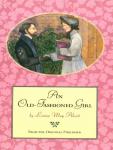
An Old-Fashioned Girl
Louisa May Alcott
An Old-Fashioned Girl is a novel by Louisa May Alcott.It was first serialised in the Merry's Museum magazine between July and August in 1869 and consisted of only six chapters. For the finished product, however, Alcott continued the story from the chapter "Six Years Afterwards" and so it ended up with nineteen chapters in all. The book revolves around Polly Milton, the old-fashioned girl who titles the story. Polly visits her wealthy friend Fanny Shaw in the city and is overwhelmed by the fashionable and urban life they live––but also left out because of her "countrified" manners and outdated clothes.The novel was the basis of a 1949 musical film starring Gloria Jean as Polly.Polly Milton, a 14-year-old country girl, visits her friend Fanny Shaw and her wealthy family in the city for the first time. Poor Polly is overwhelmed by the splendor at the Shaws' and their urbanized, fashionable lifestyles, expensive clothes and other habits she has never been exposed to, and, for the most part, dislikes. Fanny's friends reject her because of her different behavior and simple clothing, and Fan herself can't help considering her unusual sometimes. However, Polly's warmth, support and kindness eventually win the hearts of all the family members, and her old-fashioned ways teach them a lesson.Six years later, Polly comes back to the city to become a music teacher and struggles with profession issues and internal emotions. Later in the book, Polly finds out that the prosperous Shaws are on the brink of bankruptcy, and she guides them to the realization that a wholesome family life is the only thing they will ever need, not money or decoration.With the comfort of the ever helpful Polly, the family gets to change for the better and to find a happier life for all of them. After being rejected by his fiancée, Trix, Tom procures a job out West, with Polly's brother Ned, and heads off to help his family and compensate for all the money he has wasted in frivolous expenditures. At that point of the book, we see that Polly and Tom seem to have developed strong feelings for one another.At the end of the book, Tom returns from the West and finally gets engaged to his true love, Polly.
-
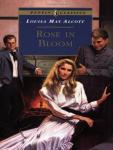
Rose In Bloom
Louisa May Alcott
Written by Louisa May Alcott, Rose in Bloom depicts the story of a nineteenth century girl, Rose Campbell, finding her way in society. Sequel to Eight Cousins.The story begins when Rose returns home from a long trip to Europe. Everyone has changed. As a joke, Rose lines up her seven cousins to take a long look at them, just as they did with her when they first met. The youngest accidentally mentions that the aunts want Rose to marry one of her cousins to keep her fortune in the family. Rose is very indignant, for she has decided ideas about what her future holds. From the beginning, she declares that she can manage her property well on her own and that she will focus on philanthropic work. Charlie has already decided she is marked out for him, with the approval of his mother.Phebe also comes home no longer the servant that Rose "adopted" but as a young lady with a cultured singing ability. Rose challenges anyone who would look down on "her Phebe", and she is readily accepted as part of the Campbell clan until Archie falls in love with her: the family feel that Archie would be marrying beneath himself. Phebe's pride and debt to the family make her wish to prove herself before she will accept Archie; so she leaves the Campbells' home and sets off to make a name for herself as a singer, to try to earn the respect of her adopted family.After some time at home, Rose has her "coming out" into society, much to her Uncle Alec's chagrin. She promises to try high society for only three months. During that time, her cousin Charlie falls in love with her and tries in various ways to woo her. Rose begins to give in to his charm, but he derails the budding romance by coming to her house, late one night, very drunk. This ruins all her respect for him and she sees how unprincipled he really is. After the three months are up, Rose begins to focus on her philanthropic projects and convinces Charlie to try to refrain from alcohol and other frivolous things, in order to win her love and respect.She tries to help Charlie overcome his bad habits with the help of her uncle, but fails. Charlie does all he can to win her heart, but in the end he succumbs, hindered by his own weak will and his constant need for acceptance by his friends. Being spoilt by his mother meant he never learned to say "no", even to himself, and his lack of discipline proves fatal: Charlie's life ends tragically in an alcohol-induced accident on the eve of his voyage to see his father and restore his good character. Although Rose never was in love with Charlie, she did have hope that he would return a better man and that they might see what relationship could develop.Several months after Charlie's death, Rose finds out that another cousin, Mac, is now in love with her. At first, never thought of him as anything but "the worm", she refuses his love; but she does declare the deepest respect for him. This gives Mac hope, and he goes to medical school, willing to work and wait for her. She finds his devotion touching, and she begins to see him clearly for the first time, realizing that Mac is the "hero" she has been looking for. He is exactly suited to her tastes and has become a man in the noblest sense of the word. He also settles a joke with her by publishing a small book of poetry to wide critical success, earning her respect even more deeply. It is his absence that shows her how much she cares for him.While Rose is discovering her heart, Steve and a minor character, Kitty, engage to marry. This creates a new sensation in the family, and Kitty begins to look to Rose for sisterly guidance. Rose encourages her to improve her silly mind, and Kitty is a very willing pupil. Rose continues to wait for Mac's return but reaches a crisis when Uncle Alec becomes very sick while visiting Mac; Phebe nurses him back from the brink of death, at personal peril, and returns him to the anxious Campbells to be greeted as a triumphant member of the family, sealing her own engagement with Archie with everyone's blessing. This homecoming is completed for Rose when she is reunited with Mac and finally declares her own sentiments. The book closes with three very happy couples, and much hope for their felicity.
